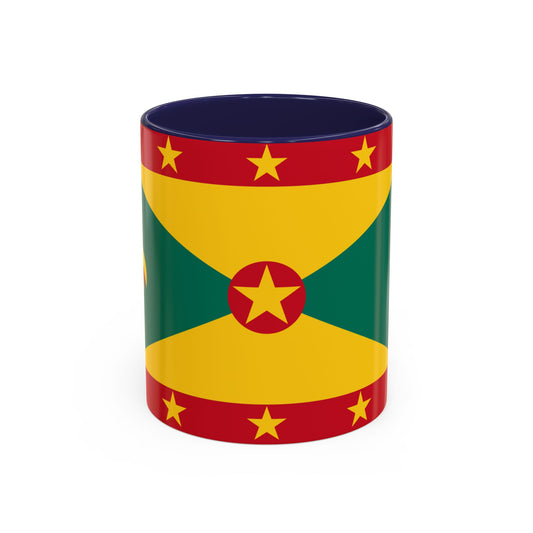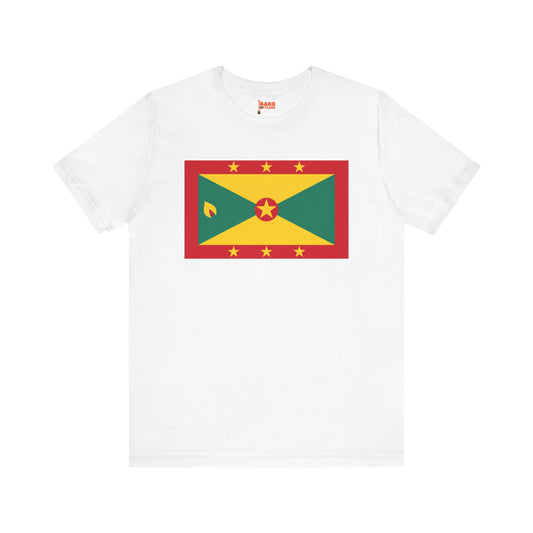-
Grenada Backpack
Regular price $59.79 USDRegular priceUnit price / per -
Grenada Leather Patch Hat
Regular price $18.85 USDRegular priceUnit price / per -
Grenada Flag Sweatshirt
Regular price $34.15 USDRegular priceUnit price / per -
Grenada Sweatshirt
Regular price $34.15 USDRegular priceUnit price / per -
Grenada Mug
Regular price $11.65 USDRegular priceUnit price / per -
Grenada Trucker Cap
Regular price $14.90 USDRegular priceUnit price / per -
Grenada Hoodies
Regular price $34.40 USDRegular priceUnit price / per -
Grenada T-shirts
Regular price $22.79 USDRegular priceUnit price / per -
Grenada Flag Hoodies
Regular price $34.40 USDRegular priceUnit price / per -
Grenada Flag on T-shirt
Regular price $22.79 USDRegular priceUnit price / per
Collection: Grenada
The Grenada flag, also known as the flag of Grenada, is a vibrant symbol that holds significant historical and cultural meaning for the people of this Caribbean nation.
Overview of the Grenada Flag

The Grenada flag is distinguished by a unique design incorporating a left-side triangle and a right-side rectangle, bisected by a diagonal gold and green stripe. At the heart of the flag lies a red disk featuring a gold, five-pointed star encircled by a red border. Each corner of the flag contains a star of the same color positioned within a red circle. The primary colors used are red, yellow (often referred to as gold), and green, each symbolizing key aspects of Grenadian culture, environment, and community spirit.
The layout is strategic, with the left triangle pointing towards the flagpole and the right rectangle extending to the flag's outer edge, creating a dynamic and forward-moving visual effect. This sophisticated arrangement of shapes, colors, and symbols makes the Grenada flag a compelling emblem of the nation's identity, blending tradition with a sense of progress and unity.
Historical Context of the Grenada Flag
The evolution of the Grenada flag is closely tied to the island nation's journey to sovereignty and self-identity. Officially adopted on February 7, 1974, the flag came into existence as Grenada emerged as an independent state, breaking away from over two centuries of British colonial rule. This pivotal moment was a step toward political autonomy and an opportunity for Grenadians to craft a national symbol that encapsulated their collective aspirations, values, and the natural beauty of their homeland.
Before achieving independence, Grenada was represented under various flags that symbolized its colonial status, including the British Blue Ensign, which featured the Union Jack alongside the colonial badge of Grenada. The transition to a unique flag symbolized a rejection of the colonial legacy and an embracing of a distinct Grenadian identity. The design process involved contributions from citizens, ensuring that the new flag would resonate with the national consciousness and embody the spirit of unity and independence.
The flag's adoption was a landmark event, coinciding with Grenada's declaration of independence. It signified a change in political status, a reimagining of national identity, and a commitment to self-determination. The flag has since become an enduring emblem of Grenada's sovereignty, culture, and the resilience of its people, celebrated and revered through generations.
Symbolism Behind the Grenada Flag

The symbolism embedded within the Grenada flag is a testament to the island's rich history, diverse culture, and natural splendor. The central star, known as the 'Star of Grenada,' embodies the unity of its people, shining brightly against a backdrop of challenges and triumphs. The color scheme is particularly evocative, red symbolizing courage and vitality, reflecting the Grenadian spirit and their struggle for independence. Yellow, or gold, captures the warmth of the sun and the island's bountiful resources, including its famed spices, a cornerstone of the local economy and culture. Green represents the lush landscapes and agricultural fertility that Grenada is blessed with, highlighting the importance of the land to the nation's well-being and identity.
The three stars in the upper left and lower right corners stand for the three parishes of Grenada, signifying governmental order and the democratic principles that guide the nation. The nutmeg pod depicted on the left side of the flag pays homage to one of Grenada's most important exports and designates the country's nickname, "The Spice Island." Each element of the flag's design tells a part of the Grenadian story, weaving together aspects of its past, present, and aspirations for the future, making it a profound national symbol.
Current Relevance of the Grenada Flag
In contemporary Grenada, the flag continues to hold a place of honor and significance, prominently featuring in various national celebrations and official functions. The Grenada flag symbolizes the nation's sovereignty, unity, and cultural heritage, from Independence Day commemorations to cultural festivals and international diplomatic events. In military contexts, the flag is ceremonially used to represent honor and loyalty to the country, reflecting the Grenadian people's respect and pride for their armed forces and their role in national security.
While the flag is a source of national pride, it also serves as a focal point during national identity and heritage discussions, prompting debates and reflections on what it means to be Grenadian in a globalized world. These discussions are vital for fostering a sense of belonging and community among Grenadians at home and in the diaspora. Moreover, the flag's presence in international sporting events, such as the Olympics, showcases Grenada to the world, uniting Grenadians behind their athletes and national representatives. Despite the lack of significant controversies, the flag’s design and its symbols encourage ongoing dialogue about the nation's history, achievements, and future aspirations.
Additional Facts and Flag Protocols
When it comes to the display and handling of the Grenada flag, there are several important guidelines designed to ensure it is treated with the utmost respect. Among these, the flag must be prominently displayed, always occupying a position of superiority when flown alongside other flags. This means it should be placed at the center, above all other national flags, or at the marching right when carried in procession with other flags. It is also imperative that the flag is illuminated if it is flown at night, symbolizing the nation's enduring spirit.
When the flag becomes worn or damaged, it should be retired and disposed of in a dignified manner, preferably through a ceremonial burning, to honor its significance as a national symbol. The Grenada flag should not be draped over vehicles except on official occasions by the government, and it should not be used for commercial purposes without proper authorization to maintain its sanctity and significance.
Additionally, on national days of mourning, the flag is flown at half-mast as a sign of respect and remembrance, signifying the nation's collective grief and solidarity in times of loss. These protocols reflect the deep respect Grenadians have for their flag and underscore the flag’s role in embodying the nation's principles, values, and aspirations.




















